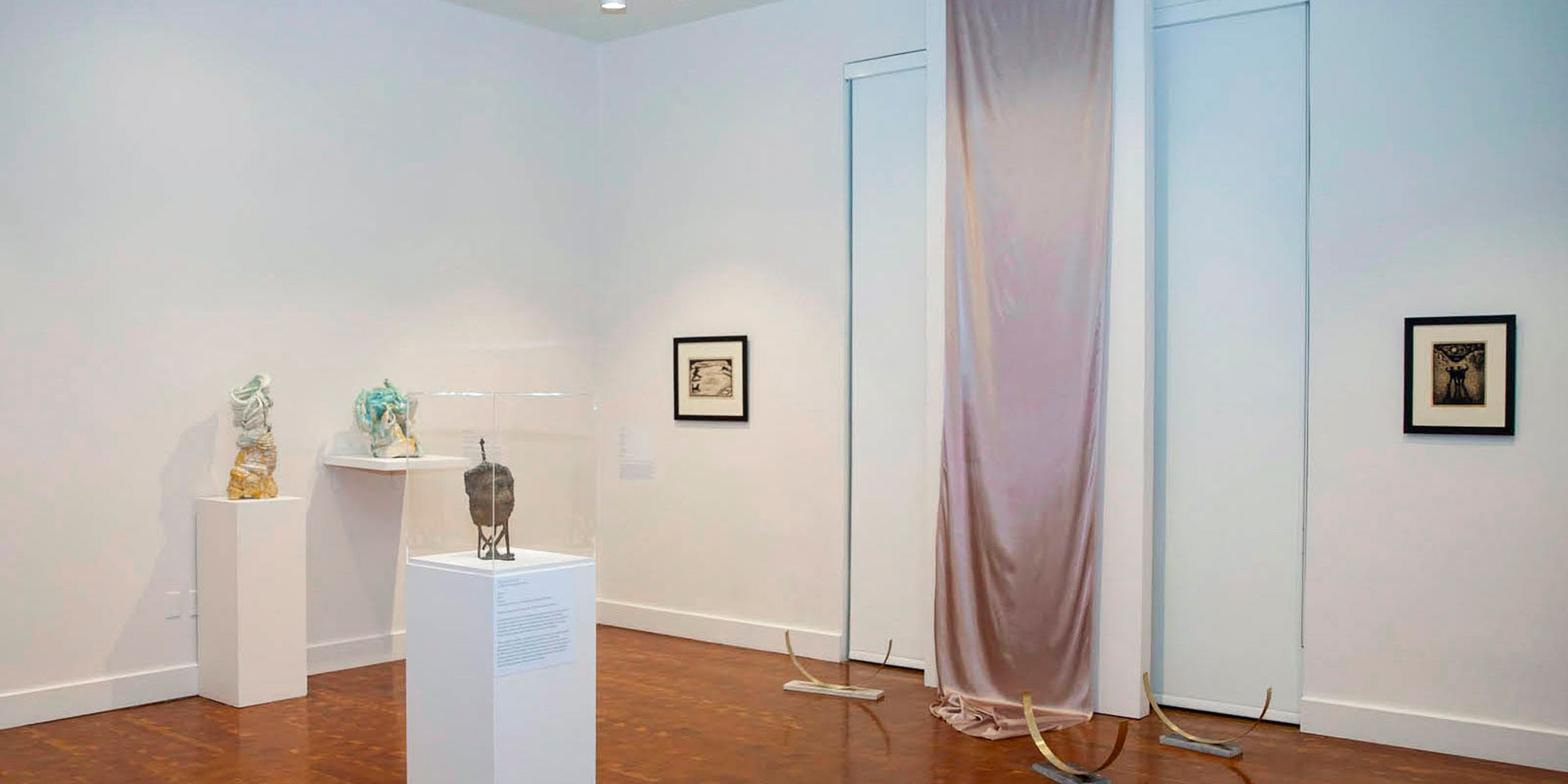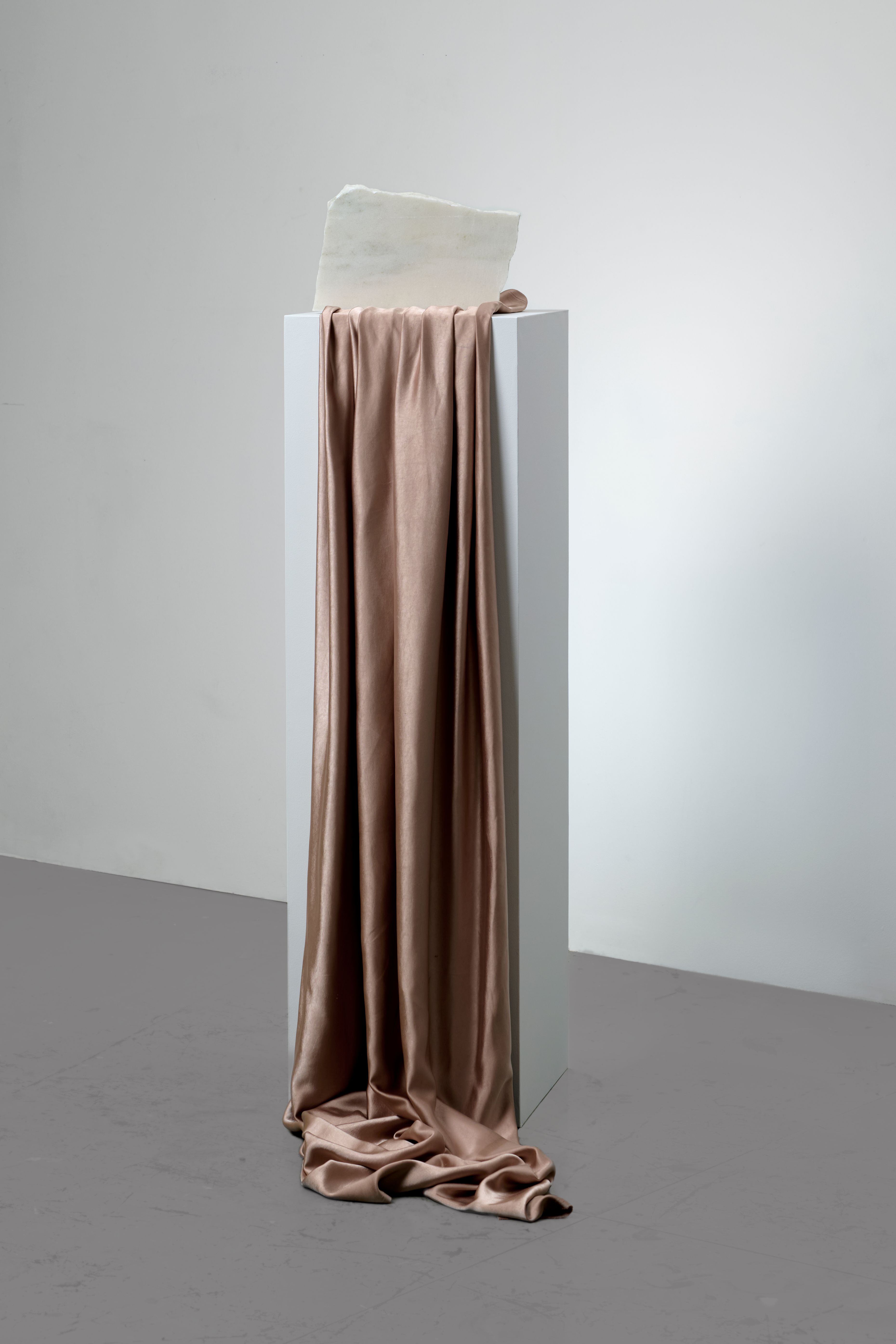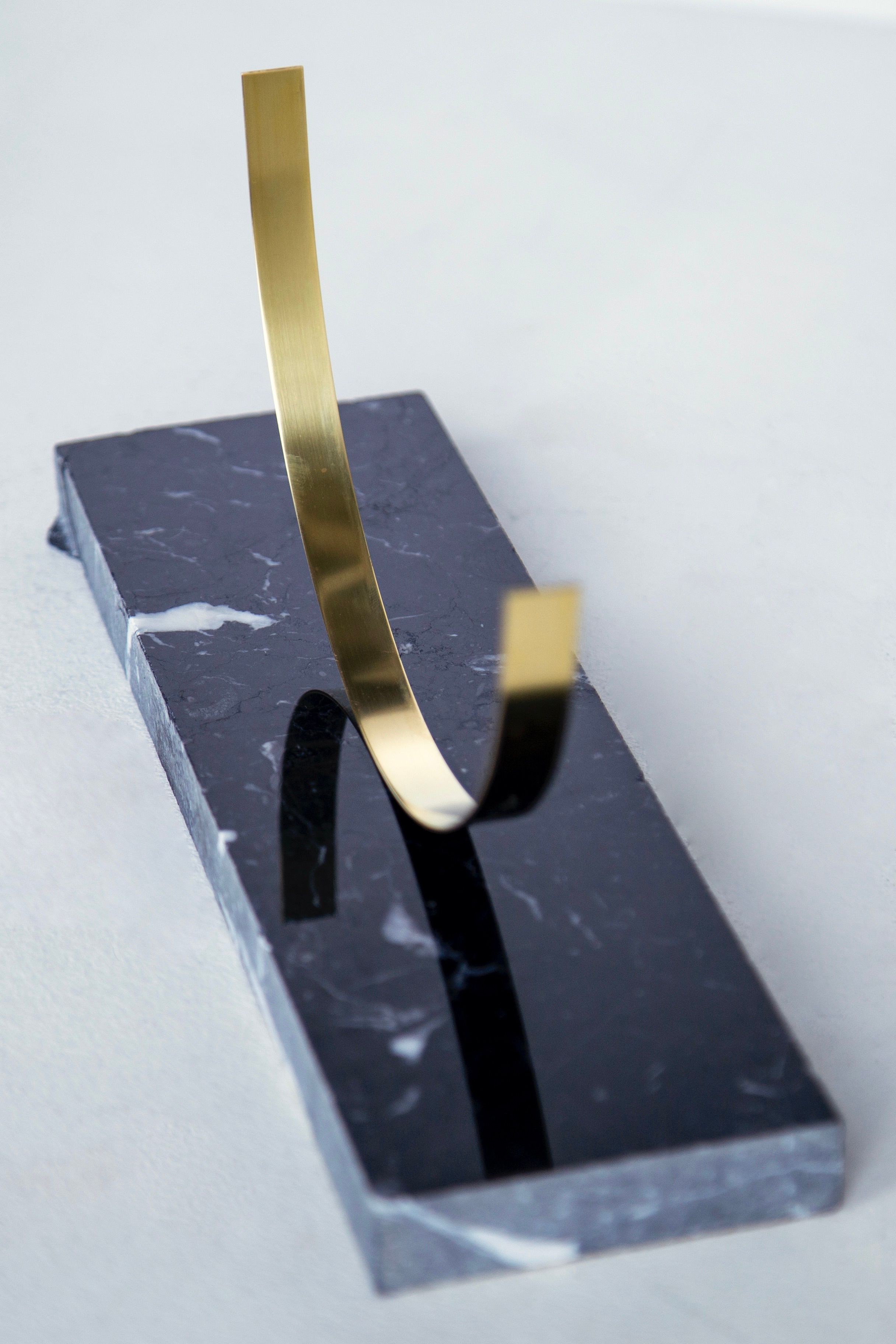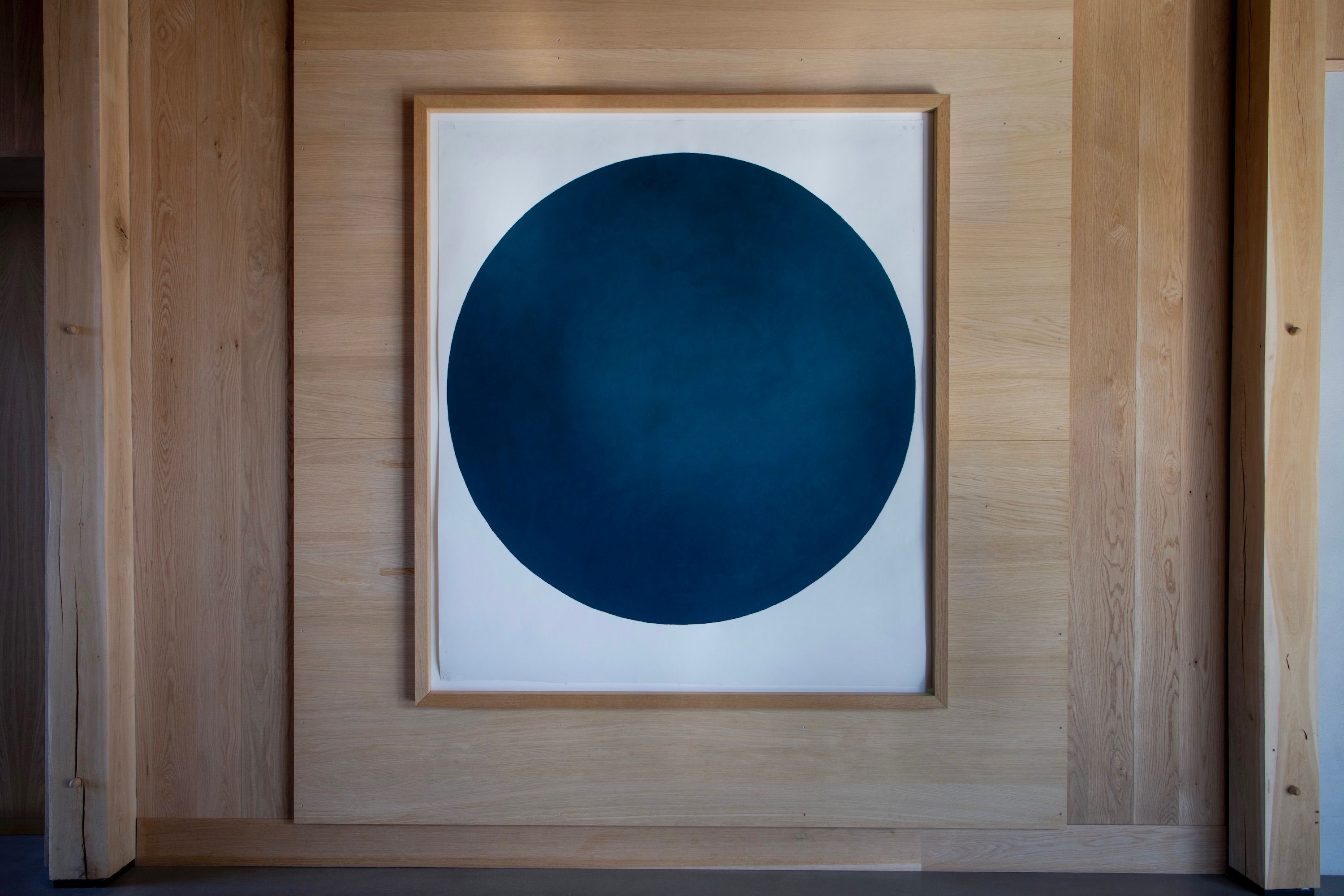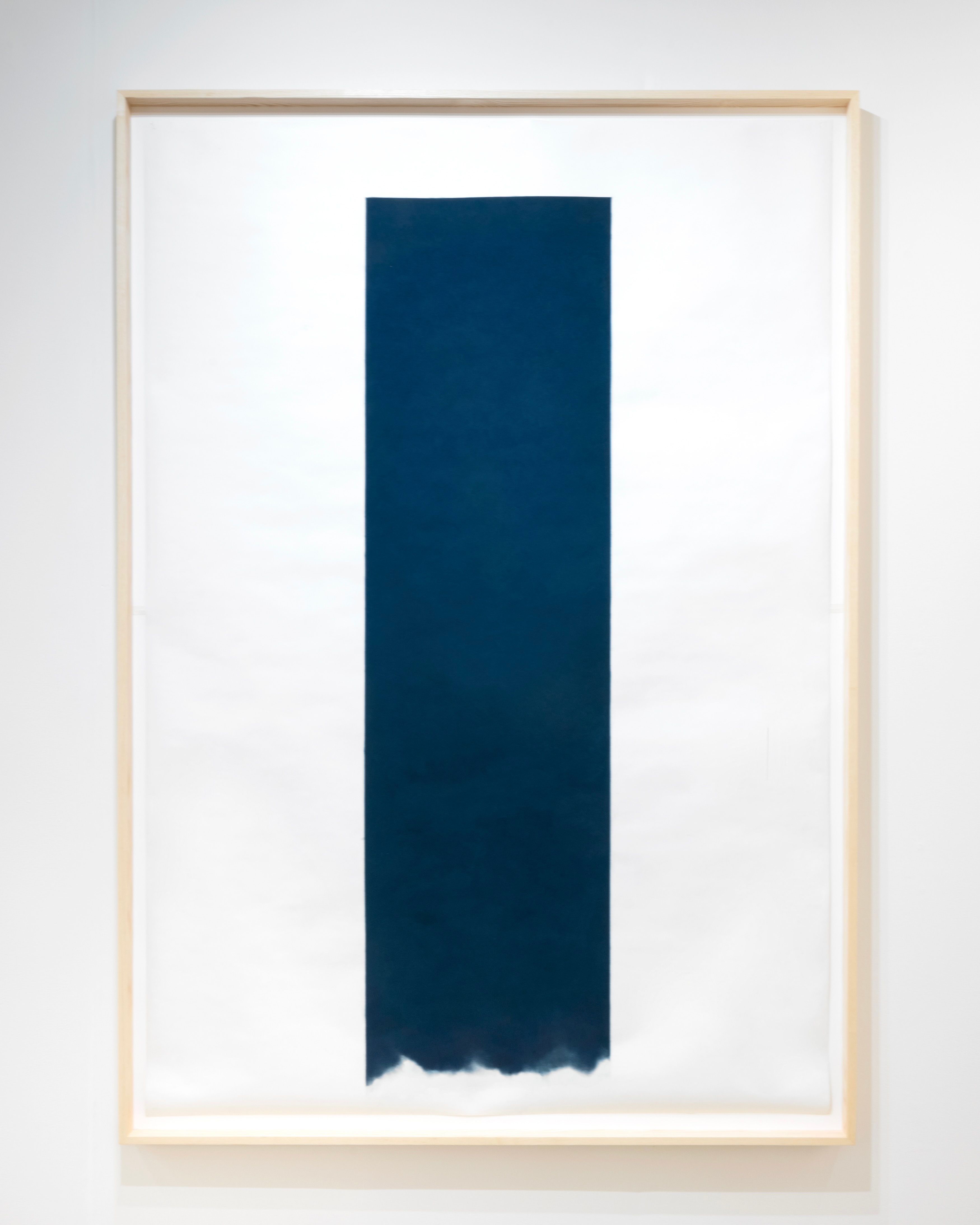I have previously created several large-scale rectangular shapes in pastel on paper, and also have worked with satin in similar cascading shapes, but on a smaller scale. For this exhibition, I scaled up the work and used the wall to the maximum advantage. I like to work with and enhance the natural gravity and “will” of the material in a kind of effortless way. The indeterminate hues of the satin, and the shimmer in it, is of huge importance. I like the nuances in the textile, and how light becomes a part of it and it changes depending on the setting. I also wanted to include brass bows and marble, which are materials I often combine in my work, but again on a smaller scale than here. The brass reflects light, and the rounded shapes are also reflected downwards in the dark marble. These are immaterial but important qualities in the work.
An unexpected element of the installation is the air-conditioning in the gallery! It makes the satin move quietly and subtly, as if in a breeze, and the piece becomes animate which I really love. This corresponds perfectly with the theme of the exhibition and of my work which is time. And it also reminds me of a site-specific temporary open-air project I did at Sølyst in Stavanger in 2017, where I mounted five different textiles in trees and they interacted with the wind and light.
So yes, the work resembles my work in the past, but it is much larger than my previous indoor pieces.

